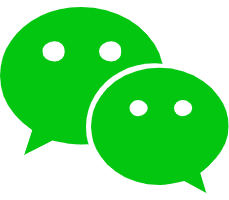Leveraging CAD/CAM Software for Faites une demande maintenant ! of Automotive Components
The automotive industry’s push for precision, efficiency, and innovation has made CAD/CAM software indispensable for CNC machining. These tools bridge the gap between design and production, enabling engineers to translate complex 3D models into optimized toolpaths for automotive parts like engine blocks, transmission components, and chassis elements. By integrating advanced simulation, adaptive toolpath generation, and multi-axis machining capabilities, CAD/CAM software addresses the unique challenges of automotive manufacturing, such as tight tolerances, intricate geometries, and high-volume production demands.
Table of Contents
ToggleStreamlining Design-to-Manufacturing Workflows
CAD/CAM software eliminates manual programming bottlenecks by automating critical steps in the CNC machining process. Designers can import 3D CAD models directly into the CAM environment, where features like holes, pockets, and fillets are automatically recognized and mapped to machining operations. This seamless integration reduces errors caused by misinterpretation of 2D drawings and accelerates the transition from prototyping to full-scale production. For automotive parts with organic shapes, such as intake manifolds or suspension components, CAM tools use surface analysis algorithms to generate smooth, collision-free toolpaths that maintain dimensional accuracy.
Automated Feature Recognition and Toolpath Optimization
Modern CAM systems employ artificial intelligence to identify machinable features and suggest optimal cutting strategies. For example, a cylindrical boss on an engine block might trigger a sequence of roughing, semi-finishing, and finishing operations with automatically selected tool diameters and stepovers. This automation not only speeds up programming but also ensures consistency across batches, a critical requirement for automotive quality standards. Additionally, CAM software can simulate material removal in real time, allowing engineers to validate toolpaths before machining begins, thus minimizing waste and rework.
Enhancing Precision Through Multi-Axis Machining
Automotive components often require machining at complex angles or on curved surfaces, tasks that are impractical with traditional 3-axis CNC machines. CAD/CAM software unlocks the potential of 4- and 5-axis machining centers by enabling simultaneous tool movement along multiple axes. This capability is essential for parts like turbine housings or CV joint components, where undercuts and deep cavities demand precise tool orientation. CAM algorithms calculate the optimal tool axis and engagement angles to avoid collisions, reduce vibration, and achieve uniform surface finishes, even in hard-to-reach areas.
Dynamic Toolpath Adjustments for Complex Geometries
Advanced CAM modules support adaptive toolpath generation, where cutting parameters adjust dynamically based on local geometry. For instance, when machining a variable-depth pocket, the software might increase the stepover in shallow regions to boost material removal rates while reducing it in deeper sections to maintain cutting stability. This flexibility ensures efficient machining of automotive parts with non-uniform cross-sections, such as differential housings or brake calipers, without compromising accuracy or tool life.
Reducing Production Costs with Simulation and Validation
Errors in CNC machining can lead to costly tool breakage, machine downtime, or scrap parts—risks that are heightened in automotive manufacturing due to high-volume demands. CAD/CAM software mitigates these risks through integrated simulation tools that replicate the entire machining process in a virtual environment. Engineers can analyze toolpaths for collisions, gouges, or excessive material load before the machine is ever powered on. For example, a simulation might reveal that a long-endmill tool will deflect during a deep slot machining operation, prompt the use of a shorter, stiffer tool or a revised cutting strategy.
Optimizing Cutting Conditions for Cost Efficiency
Beyond collision detection, CAM simulation helps optimize cutting parameters like spindle speed, feed rate, and depth of cut to balance productivity with tool wear. By running virtual tests on different material grades or machining strategies, manufacturers can identify the most cost-effective approach without trial-and-error on the shop floor. This data-driven optimization is particularly valuable for automotive parts made from high-performance alloys, such as titanium or nickel-based superalloys, where machining costs are high, and process stability is paramount.
Supporting Customization and Rapid Prototyping
The automotive industry’s shift toward electric vehicles and lightweight materials has increased demand for customized components and faster prototyping cycles. CAD/CAM software facilitates this agility by enabling rapid iterations of design and manufacturing data. Engineers can modify a 3D model and regenerate toolpaths in minutes, allowing for quick validation of new part geometries or material choices. For low-volume production runs, such as specialized sensors or battery housing components, CAM tools can create efficient toolpaths that minimize setup times and material usage, making customization economically viable.
Integrating Additive and Subtractive Manufacturing
Some CAD/CAM platforms now support hybrid manufacturing workflows, combining additive processes like 3D printing with subtractive CNC machining. This approach is useful for automotive parts with internal lattice structures or conformal cooling channels, which are difficult to produce using traditional methods. The software can design the part with additive layers, then generate CNC toolpaths to machine critical surfaces or threads to final tolerances, merging the best of both worlds for lightweight yet durable components.
By harnessing the capabilities of CAD/CAM software, automotive manufacturers achieve higher precision, lower costs, and greater flexibility in CNC machining operations. As the industry continues to evolve toward electrification and smart manufacturing, these tools will remain central to meeting the demands for innovation and efficiency in automotive component production.




